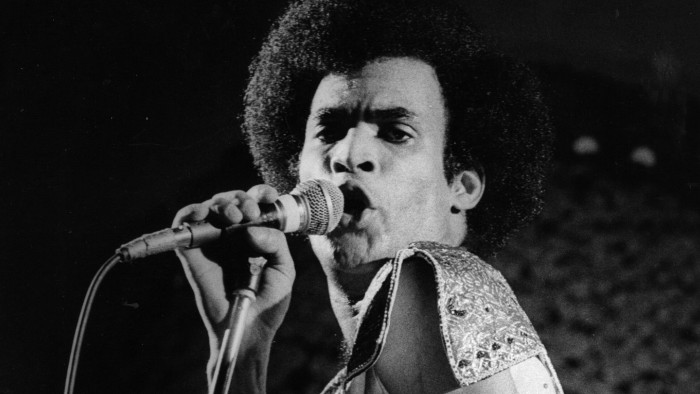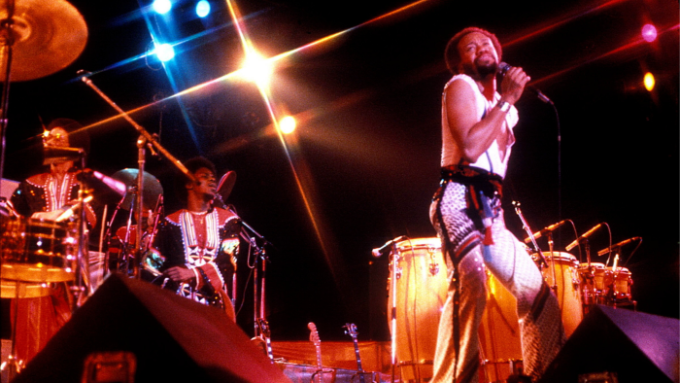Boney M’s Rasputin caused a stir behind the iron curtain

Simply sign up to the Life & Arts myFT Digest -- delivered directly to your inbox.
This week’s song tells a strange and far-reaching story, one that involves a Russian mystic, a German-Caribbean dance group and the explosion of disco behind the iron curtain: Boney M’s 1978 single “Rasputin” is a dance floor classic: disco claps and a grooving bassline, embellished by the Slavic twang of a three-stringed balalaika, plus outbreaks of chanting and spoken interludes. Lyrically, it charts a highly speculative biography of Grigori Rasputin: mystic healer, close confidant to Tsar Nicholas II and, in Boney M’s telling, “Russia’s greatest love machine”.
It’s hard to reflect on Boney M’s musical output as distinct from the four-piece’s flamboyant stage presence. When performing “Rasputin” live, frontman Bobby Farrell would dance, spin and scissor kick his way round the stage, sometimes wearing a straggly fake beard — a suitably wild narrator for a song that culminates in the brutal murder of its protagonist. But Farrell, perhaps the most famous man ever to leave the tiny Caribbean island of Aruba, rarely actually sang unless compelled to do so live. “Rasputin’s” gravelly male vocals are the work of Frank Farian, the German producer and songwriter who had assembled Boney M in 1975 as a visual front for his songs.
No one is quite sure why this early Europop outfit were chosen by Soviet premier Leonid Brezhnev to be the first major western act to play in the USSR. Perhaps it was because their carnival costumes and singalong melodies put them on the safe side of outré — enough to excite the restless younger generation, but unlikely to incite them to any real rebellion. It certainly wasn’t “Rasputin” that got Boney M the gig. While it might be imagined that a song about the excesses of Tsarist Russia would have found a ready audience in the Kremlin, it was excluded from their 1978 Red Square concert because of its sexually suggestive lyrics. The ban didn’t stop the tune from becoming a hit behind the Iron Curtain. “Rasputin” quickly became a staple of youth-club dance floors and house band set lists across the Soviet Union. The following year, during a visit to Poland, the group defied the Communist authorities and played it live.
“Rasputin” has continued to travel well. Finnish folk-metal band Turisas released their loud, accelerated cover as a single in 2007. In 2012 the noted Indian composer Pritam Chakraborty acquired the rights to remake the song as “I’ll Do the Talking Tonight”, an electropop number that appeared as a choreographed dance sequence in the Bollywood spy film Agent Vinod the same year.
Meanwhile the entrepreneurial Farian turned his back catalogue into a jukebox stage musical. Daddy Cool, which premiered at London’s Shaftesbury Theatre in 2006 and has toured occasionally in the decade since, tells a familiar story of star-crossed lovers from rival gangs. “Rasputin” proved one of the harder hits to crowbar into the plot; the “lover of the Russian queen” became the more prosaic “hero of the London scene”, a DJ and music producer. Thankfully, the wonderfully dated description of Rasputin as “a cat that really was gone” remained intact.
Boney M were not involved in the musical. The group had split in 1986 and become embroiled in legal disputes with each other and with Farian. But all four continued to tour their back catalogue separately, and the former Soviet states remained among their most loyal fans. In 2007, the Georgian government invited original member Marica Barrett to play a gig in war-torn South Ossetia in a bid to convince separatist rebels that life would be better if they didn’t leave.
In a curious twist, Bobby Farrell died in his hotel room after playing an energetic concert in St Petersburg on December 30 2010: on the same date and in the same town as Rasputin had been murdered 94 years previously.
Photograph: Gary Merrin/Keystone/Getty

Comments